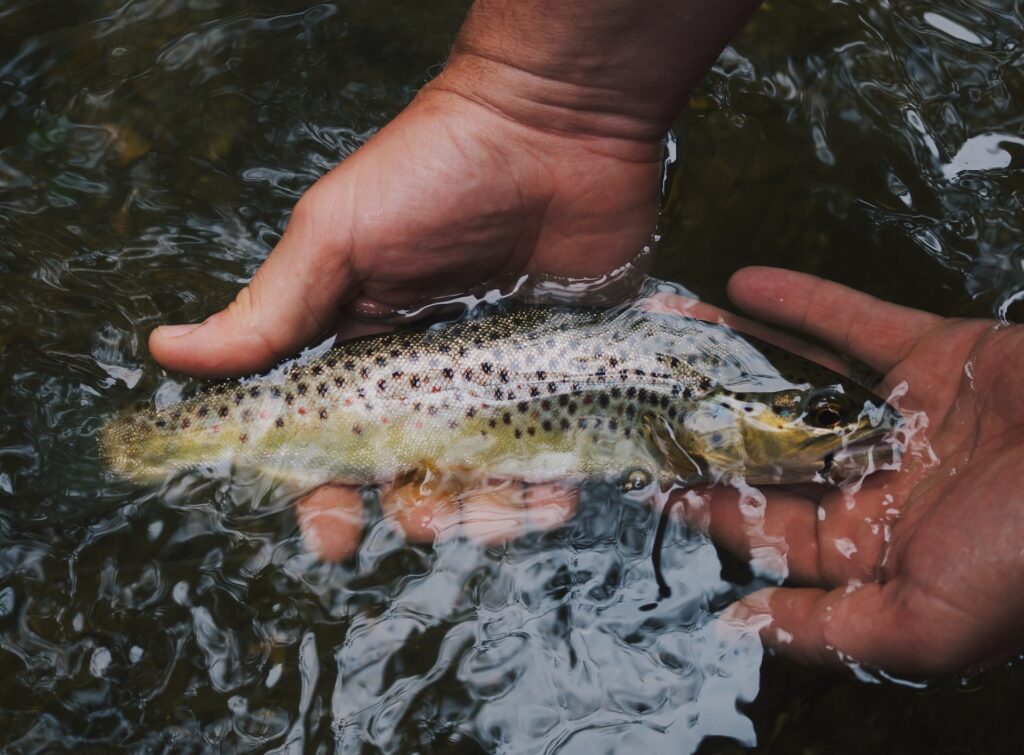
Oden State Fish Hatchery in Alanson
The Oden State Fish Hatchery in Alanson produces three strains of brown trout and one strain of rainbow trout.
Photo by the Harbor Springs Historical Society
Northern Michigan is home to several museums dedicated to preserving the area’s rich history and give a look into the array of industries — both past and present. Take a step back in time to learn about the history of Northern Michigan communities and culture through digital story telling, authentic images and artifacts, as well as engaging interactive exhibits to engage and captivate visitors of all ages.
The Andrew J. Blackbird Museum is named for Andrew Blackbird who was born in what is now Harbor Springs around 1815. His father was an Ottawa chief named Mack-e-te-be-nessy (“black hawk”). The name was mistranslated as “Blackbird”, which became the family’s English name. Mack-e-te-be-nessy was chief of the Arbor Croche, or Middle Village band of the Ottawas. Andrew was trained as a blacksmith but enjoyed education and attended Twinsburg Institute in Ohio and Michigan State Normal School, now Eastern Michigan University. In his later years, Blackbird was a counselor for both the U.S. and Ottawa and Ojibwa peoples and worked to help Native American veterans receive pensions. He helped settle land claims and worked to achieve citizenship for Native Americans.
The Charlevoix Depot Museum was donated to the Charlevoix Historical Society by Mr. and Mrs. Robert Pew and has been restored and preserved. It is used as a venue for the Historical Society’s events and programs, and is also available to patron level members for private events as well as non-profit organizations.
The Harbor Springs History Museum facility offers a unique look at the history of the community and is housed in the restored building that served as the city hall and courthouse. The Odawa Indians are highlighted as the first residents of the area. Stories of the first Catholic missionaries are followed by those of homesteaders, loggers, and resorters. In the Discovery Gallery, kids of all ages will be introduced to inventor Ephraim Shay, light keeper Elizabeth Whitney Williams, and postmaster Andrew Blackbird. Interactive displays allow visitors to experience topics from Shay’s locomotive to the Odawa language.
Charlevoix’s Harsha House was built in 1891 by Charlevoix businessman Horace Harsha and was the family home. Harsha’s daughter married Earl Young, the Charlevoix architect know for his “mushroom” hobbit houses. The museum has three Victorian period rooms, the fresnel lens that was on the Grays Reef Lighthouse, Ernest Hemingway’s original license for his marriage to Hadley Richardson, a working 1917 player piano and other local historical artifacts.
The Icebreaker Mackinaw stayed in service for 62 years and, after being decommisioned, was moved to her namesake community- Mackinaw City. When the Mackinaw was commissioned, she was the most powerful icebreaker in the world. Since being transformed into the Icebreaker Mackinaw Maritime Museum, The Mackinaw offers tours of the engine room, captain’s quarters, ward room, bridge, and mess while learning about the ship’s long career. The Ship’s Store includes Mackinaw items and Great Lakes icebreaking information.

The Inland Water Route is a series of lakes and rivers that with a short portage connects Lake Michigan to Lake Huron. Native Americans used the route to avoid rough water on the big lakes. The history of the water route is preserved at the Inland Water Route Historical Museum in Alanson. This small, Northern Michigan museum is a treasure and displays photos and artifacts on each community along the entire water route.
The Little Traverse History Museum in Petoskey is the home to three main exhibits- Ernest Hemingway, Faces and Places that Shaped Emmet County, and the Parlor Exhibit, outline the area’s history. Hemingway is a notable part of Petoskey’s history, having lived there and on nearby Walloon Lake. The Hemingway exhibit at the museum includes pictures, artifacts, and heirlooms.

The Oden State Fish Hatchery in Alanson produces three strains of brown trout and one strain of rainbow trout.

The history Northern Michigan’s Inland Water Route is preserved at the Inland Water Route Historical Museum in Alanson.
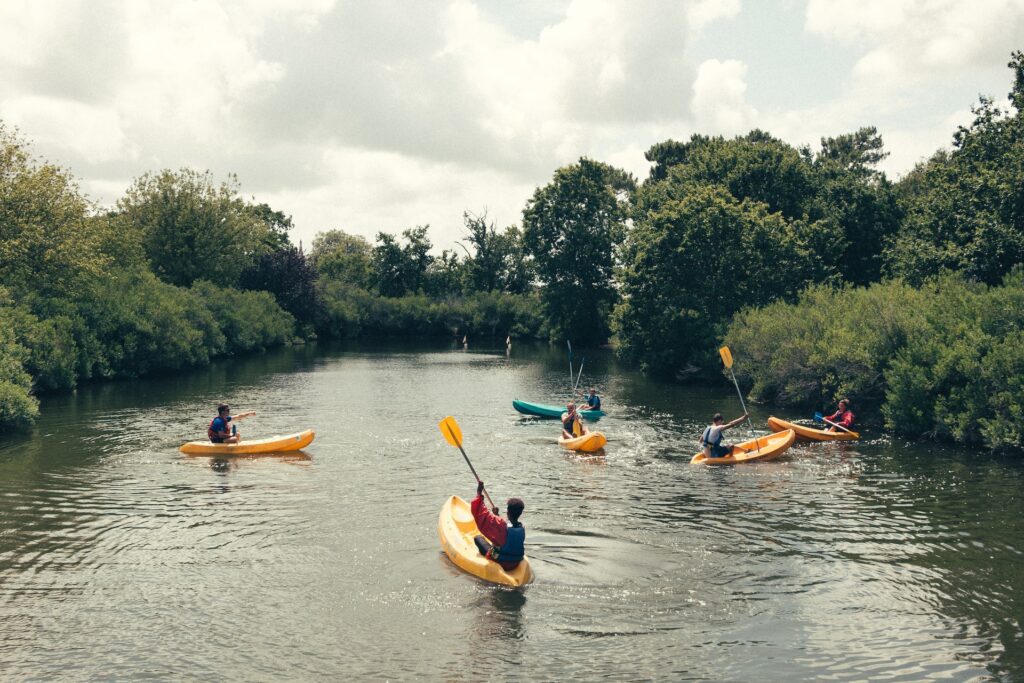
Northern Michigan has many varied settings for kayaking- whether it by river, one of the inland lakes, or Lake Michigan,
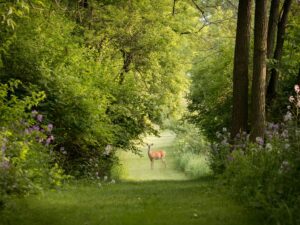
Wildlife sanctuary Thorne Swift Nature Preserve is located 3 1/2 miles north of Harbor Springs, between Lower Shore Drive and Lake Michigan.

Disc golf is hot everywhere and especially in Northern Michigan because of it’s many courses and beautiful scenery.
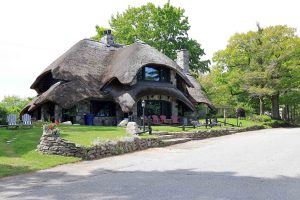
Northern Michigan builder Earl Young created the unusual mushroom houses in Charlevoix. Tours are available.
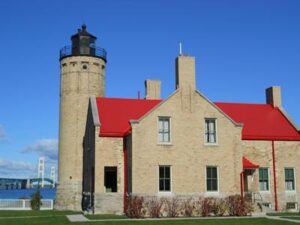
With Lake Michigan on one side and Lake Huron on the other side, Mackinaw City is a true Great Lake’s spot with lots of things to do!
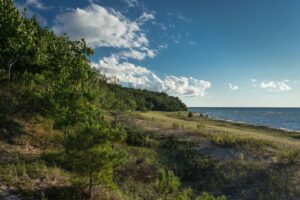
Little Traverse Conservancy protects land and scenic areas and provides opportunities for all of us to appreciate the environment.
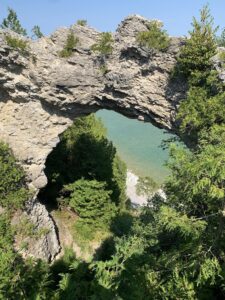
Arch Rock is a geologic wonder on Mackinac Island and stands 146′ over the Lake Huron shoreline- nearly 15 stories tall.